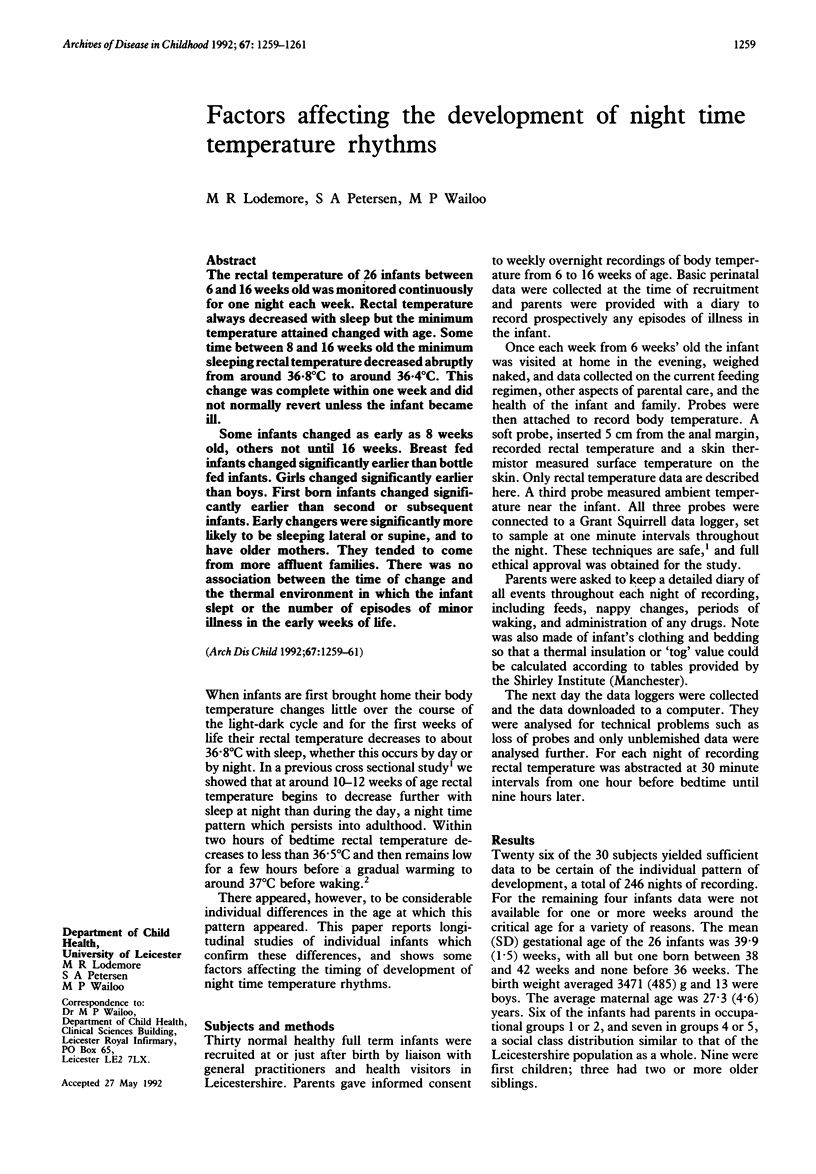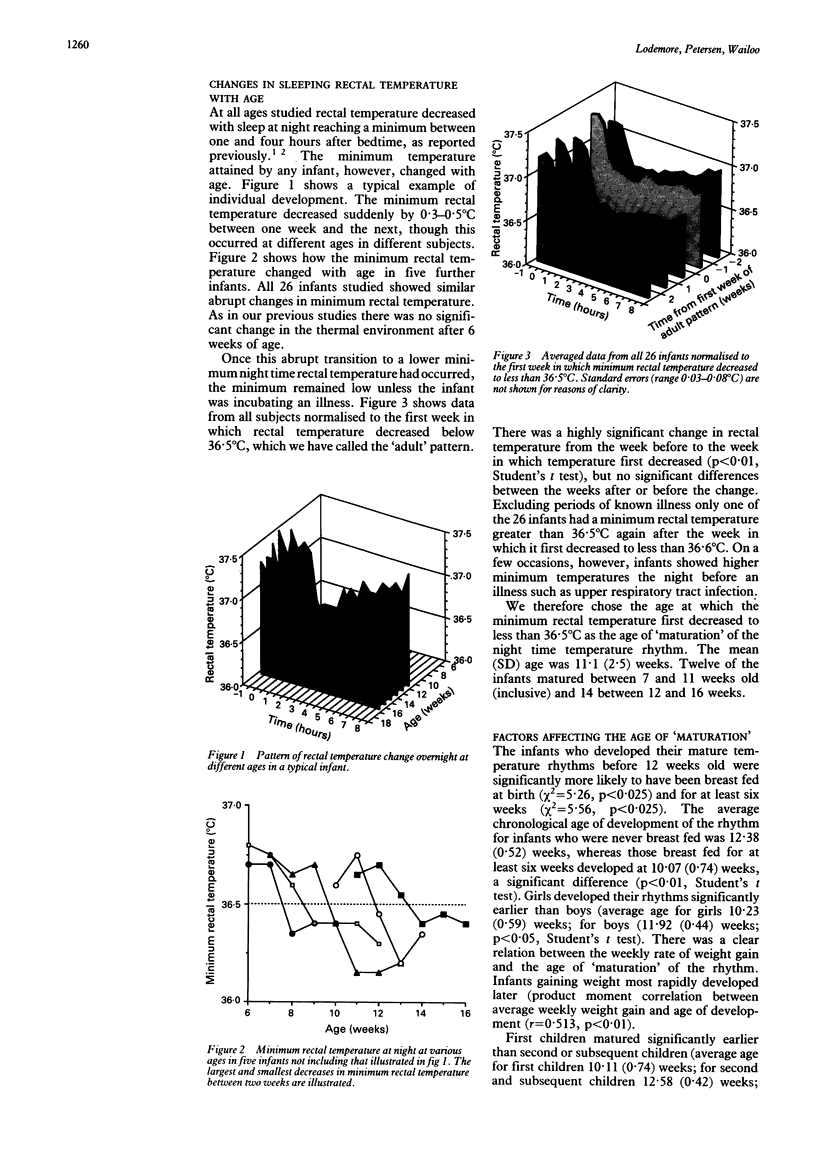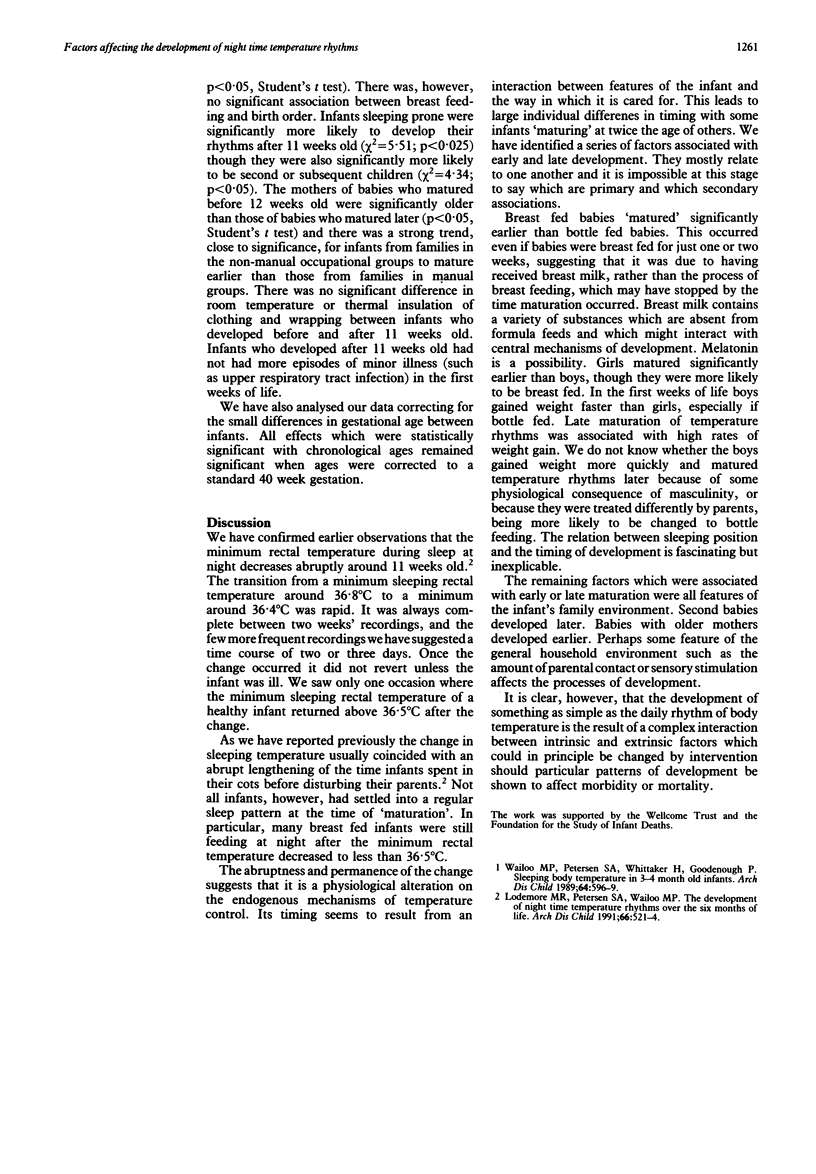Abstract
The rectal temperature of 26 infants between 6 and 16 weeks old was monitored continuously for one night each week. Rectal temperature always decreased with sleep but the minimum temperature attained changed with age. Some time between 8 and 16 weeks old the minimum sleeping rectal temperature decreased abruptly from around 36.8 degrees C to around 36.4 degrees C. This change was complete within one week and did not normally revert unless the infant became ill. Some infants changed as early as 8 weeks old, others not until 16 weeks. Breast fed infants changed significantly earlier than bottle fed infants. Girls changed significantly earlier than boys. First born infants changed significantly earlier than second or subsequent infants. Early changes were significantly more likely to be sleeping lateral or supine, and to have older mothers. They tended to come from more affluent families. There was no association between the time of change and the thermal environment in which the infant slept or the number of episodes of minor illness in the early weeks of life.
Full text
PDF


Images in this article
Selected References
These references are in PubMed. This may not be the complete list of references from this article.
- Lodemore M., Petersen S. A., Wailoo M. P. Development of night time temperature rhythms over the first six months of life. Arch Dis Child. 1991 Apr;66(4):521–524. doi: 10.1136/adc.66.4.521. [DOI] [PMC free article] [PubMed] [Google Scholar]
- Wailoo M. P., Petersen S. A., Whittaker H., Goodenough P. Sleeping body temperatures in 3-4 month old infants. Arch Dis Child. 1989 Apr;64(4):596–599. doi: 10.1136/adc.64.4.596. [DOI] [PMC free article] [PubMed] [Google Scholar]




